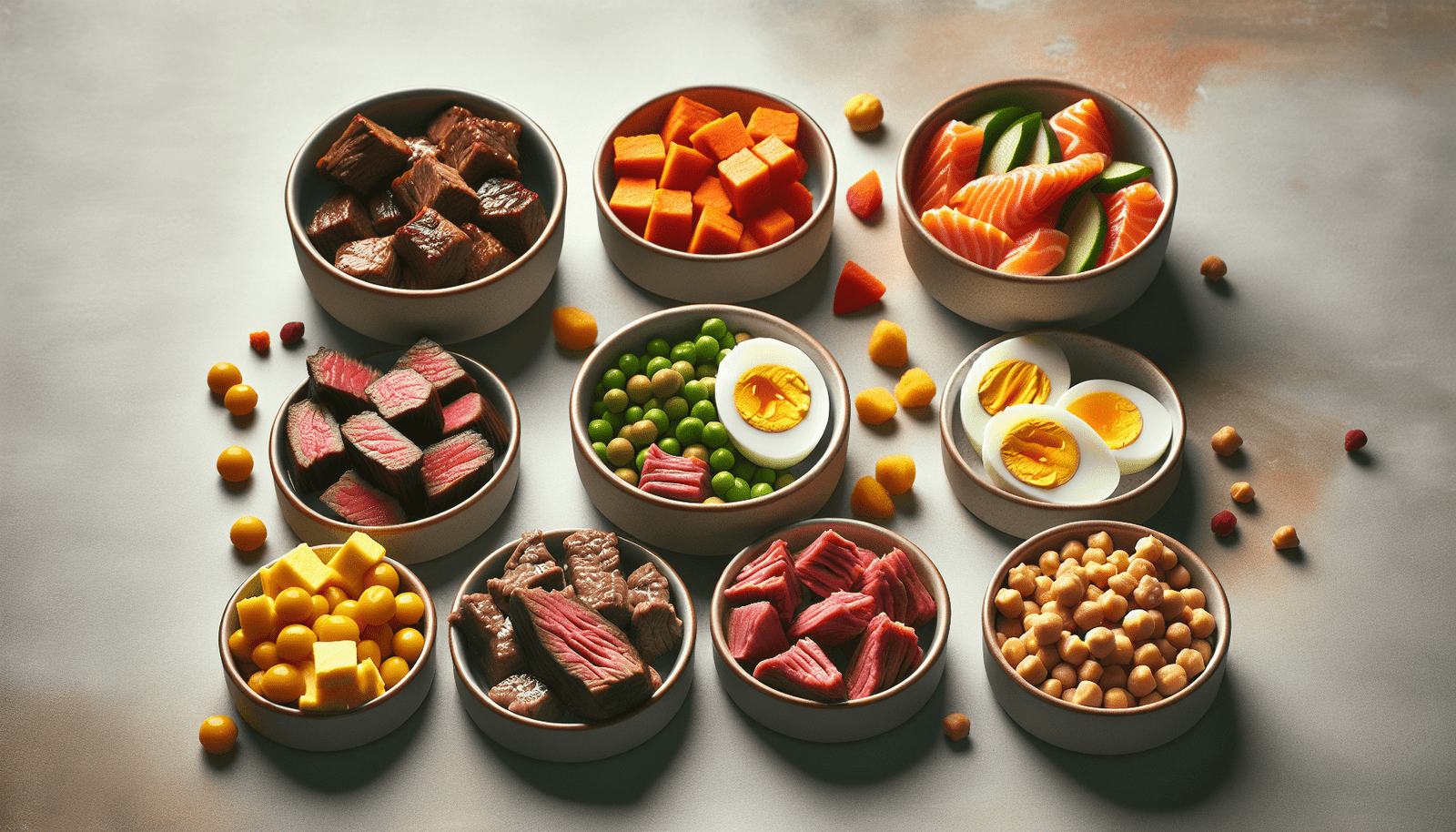Are you curious about how to ensure your baby gets enough iron during their weaning journey? Nutrition plays a crucial role in your child’s growth and development, especially during the transition to solid foods. Iron is an essential mineral that not only helps in forming red blood cells but also supports cognitive development. In this article, we’ll discuss various iron-rich foods that are perfect for baby-led weaning (BLW), making your journey smoother and more enjoyable.
Understanding Iron and Its Importance
Iron is vital for your baby’s health. It helps in producing hemoglobin, which carries oxygen to your baby’s organs and tissues. Ensuring that your little one gets enough iron is critical, particularly between the ages of six months and two years, when rapid growth occurs.
Why Iron is Crucial for Babies
- Oxygen Transport: Iron is a key component of hemoglobin. Proper oxygen transport is crucial for overall energy levels and development.
- Brain Development: Adequate iron levels are linked to cognitive development, affecting learning and behavior.
- Immune Function: Iron supports a robust immune system, helping your baby fend off infections.
Iron Deficiency: A Common Issue
Iron deficiency is one of the most common nutritional deficiencies in infants and young children. Symptoms may include fatigue, irritability, and delayed growth. As a parent, being proactive about incorporating iron-rich foods into your baby’s diet is essential.
Iron-Rich Foods for Baby-Led Weaning
When it comes to baby-led weaning, the goal is to provide your baby with foods they can safely hold and eat on their own. It’s essential to offer a variety of iron-rich foods. Below is a comprehensive list to get you started.
Meats and Poultry
Meat is one of the best sources of iron, particularly heme iron, which is easily absorbed by the body.
- Beef: Ground beef and beef strips are great options. Cook them until well done, and cut them into manageable pieces.
- Lamb: Tender lamb cubes can be grilled or slow-cooked, making them easy for little fingers to grasp.
- Pork: Include tender cuts of pork in your baby’s meals.
- Chicken: Dark meat chicken contains more iron than white meat. Cook it thoroughly and cut it into strips.
Fish and Seafood
Fish is also packed with iron and offers a range of health benefits.
- Salmon: Rich in omega-3 fatty acids, salmon is an excellent choice. You can serve it baked or poached, flaked into small pieces.
- Sardines: These tiny fish are loaded with nutrients, including iron. They can be served straight from the can (ensure they’re packed in water or olive oil).
- Tuna: Canned tuna is convenient. However, due to mercury concerns, limit its intake.
Egg
Eggs are not only a great source of protein but also contain iron.
- Boiled Eggs: Serve hard-boiled eggs cut into quarters or slices. The yolk is particularly rich in iron.
- Scrambled Eggs: Soft scrambled eggs can also be finger food.
Pulses and Legumes
Beans and lentils are fantastic plant-based sources of iron.
- Chickpeas: Roasted or boiled chickpeas can be a finger food. They are tasty and nutritious.
- Lentils: Mashed lentils or lentil burgers are an excellent choice for your baby.
- Black Beans: After cooking until soft, mash them or leave them whole depending on your baby’s ability.
Grains
Whole grains provide iron and other essential nutrients.
- Oatmeal: Prepare oatmeal with water or breast milk. Offer it in thick blobs that your baby can grab.
- Quinoa: This supergrain is not only rich in iron but also provides protein.
Vegetables
Certain vegetables also contain iron, although in smaller amounts.
- Spinach: Cooked and pureed, spinach can be added to various dishes.
- Broccoli: Rich in iron and other nutrients, you can steam it until soft for your baby to hold.
- Peas: Mashed peas are easy for babies to eat and are iron-rich.
Fruits
While fruits aren’t the highest in iron, some can complement iron intake when paired with a source of vitamin C.
- Prunes: Excellent for digestion, prunes contain some iron. Cut them into small pieces.
- Mulberries: If you have access to fresh mulberries, they are surprisingly high in iron.
Fortified Foods
There are fortified alternatives that can provide your baby with necessary iron.
- Iron-fortified Cereals: Many baby cereals contain added iron. Choose those without added sugars.
- Tofu: Silken tofu can be added to purees or scrambled as a great protein and iron option.
Combining Foods to Increase Iron Absorption
Iron absorption can be enhanced by pairing iron-rich foods with vitamin C sources.
Pairing Suggestions
Here’s a simple table showcasing food pairings that can boost iron absorption:
| Iron-rich Food | Vitamin C Source |
|---|---|
| Beef | Bell peppers |
| Chicken | Broccoli |
| Lentils | Tomatoes |
| Spinach | Oranges |
| Tofu | Strawberries |
Safe Preparation Methods
As you embark on this journey, food safety and preparation are huge priorities. Here are some safe preparation tips to keep in mind.
Cooking Techniques
- Steaming: This method helps retain the nutrients in vegetables, making them easier to digest.
- Baking: Baking fish or meat can help keep the food moist; just ensure it’s well-cooked.
- Boiling: A quick boil can soften harder foods like lentils and beans.
Avoiding Common Allergens
Before introducing new foods to your baby, check for allergens. It’s wise to introduce one new food at a time, waiting several days before offering another. This way, any reactions can be easily identified.
Serving Iron-Rich Foods: A Guide
Your approach to serving food can make a big difference in your baby’s experience with mealtime.
Serving Size and Shape
- Finger Foods: Offer foods in strips or cubes that are easy for your baby to grasp.
- Texture: Consider softer textures, especially for new eaters. Avoid hard or crunchy foods to mitigate choking hazards.
Encouraging Exploration
Allow your baby to practice self-feeding. Messy hands and faces are part of the process, so don’t be concerned! Allow your little one to explore flavors and textures at their own pace.
Monitoring Iron Intake
Keep track of your baby’s iron intake over time to ensure they’re getting enough.
Signs of Iron Deficiency
Watch for signs such as:
- Pale Skin: A potential indicator of low iron.
- Fatigue: A sluggish demeanor during playtime.
- Appetite Changes: A noticeable decrease in appetite.
If you notice these signs, consult your pediatrician for advice. Regular check-ups can help track your baby’s growth and nutrition.
Conclusion
Introducing iron-rich foods during baby-led weaning doesn’t have to be overwhelming. With a solid understanding of what foods to include and how to prepare them, you can ensure your baby’s nutritional needs are met. Remember to offer a variety of foods and don’t hesitate to combine them with vitamin C sources for better iron absorption. Enjoy this exciting time of self-discovery and culinary adventure with your little one!

